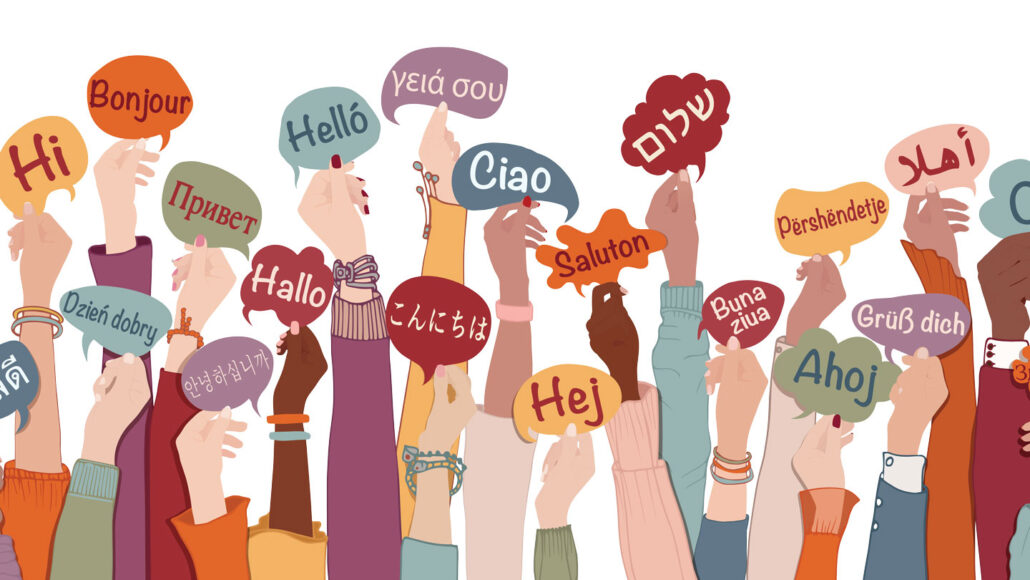Let’s learn about the science of language
The languages we speak may help shape how we see, smell and hear the world around us

More than 7,000 languages are spoken around the world today, shaping how we describe and perceive the world around us.
melitas/iStockGetty Images Plus
Hello! Hola! Habari! Nǐ hǎo!
English, Spanish, Swahili and Chinese are just a few of the more than 7,000 languages spoken around the world today. This broad array of languages has evolved over the course of human history as groups of people have split apart and moved around. All languages help people communicate their experiences. But the specific language, or languages, that a person speaks may also shape how they experience the world.
For instance, an English speaker may think of the sea and sky as being the same color: blue. But in Russian, there are different words for the light blue of the sky and dark blue of the ocean. Those colors are as distinct in Russian as pink and red are in English.
Meanwhile, people who speak Mandarin Chinese seem to be better than English speakers at perceiving pitch. That may be because pitch helps give words their meaning in Mandarin. As a result, people who speak that language are more attuned to that feature of sound.
New brain scans show that people’s native languages may even shape how their brain cells are wired together. Other scans have hinted at which parts of the brain respond to different words. Still others have revealed which parts of the brain handle language in kids versus adults.
Young kids were long thought to have the best chance of learning a new language. But recent research suggests that even older teens can pick up new languages well. So, if you’re interested in expanding your linguistic toolkit, go for it! A new language may just offer you new ways to see the world.

Educators and Parents, Sign Up for The Cheat Sheet
Weekly updates to help you use Science News Explores in the learning environment
Thank you for signing up!
There was a problem signing you up.
Want to know more? We’ve got some stories to get you started:
Is the sky really blue? It depends on what language you speak English speakers talk about color a lot but rarely about smell. Researchers are learning how those who speak other languages sense the world and why differences arise. (3/17/2022) Readability: 6.4
Kids use more of the brain than adults do to process language The brain continues to grow and mature throughout childhood. One big change occurs in which parts of the brain turn on as someone processes language. (11/13/2020) Readability: 6.9
Your window to learn new languages may still be open Results from an online grammar quiz suggest that people who start learning a second language at age 10 or 12 can still learn it well. (6/5/2018) Readability: 7.7
Explore more
Explainer: How to read brain activity
Mapping word meanings in the brain
Speaking Mandarin may offer kids a musical edge
Good dog! Canine brains separate tone of speech from its meaning
Computers can translate languages, but first they have to learn
Think twice before using ChatGPT for help with homework
Your brain wires itself to match your native language (Science News)
Neuroscientists decoded people’s thoughts using brain scans (Science News)
Activities
Different languages categorized colors many different ways. But in general, warm colors seem to be easier to describe than cooler ones. To see how this works, visit the “World Color Survey” box in this story. Pick any color on the chart. Then, tell a friend or family member the color’s name only, such as “pink” or “orange.” How many guesses does it take for them to point to the shade you had in mind? Try it with different colors across the spectrum!







